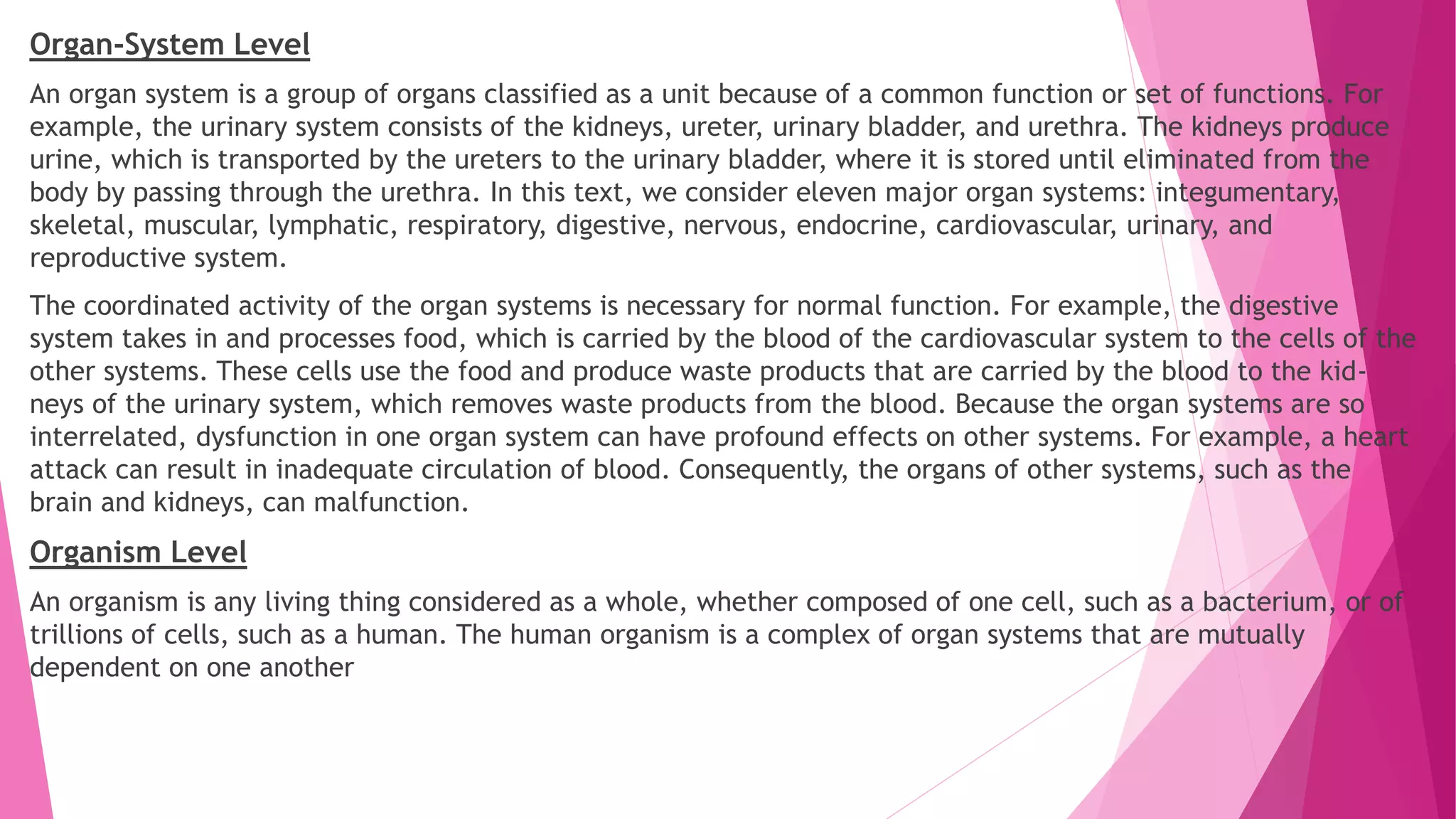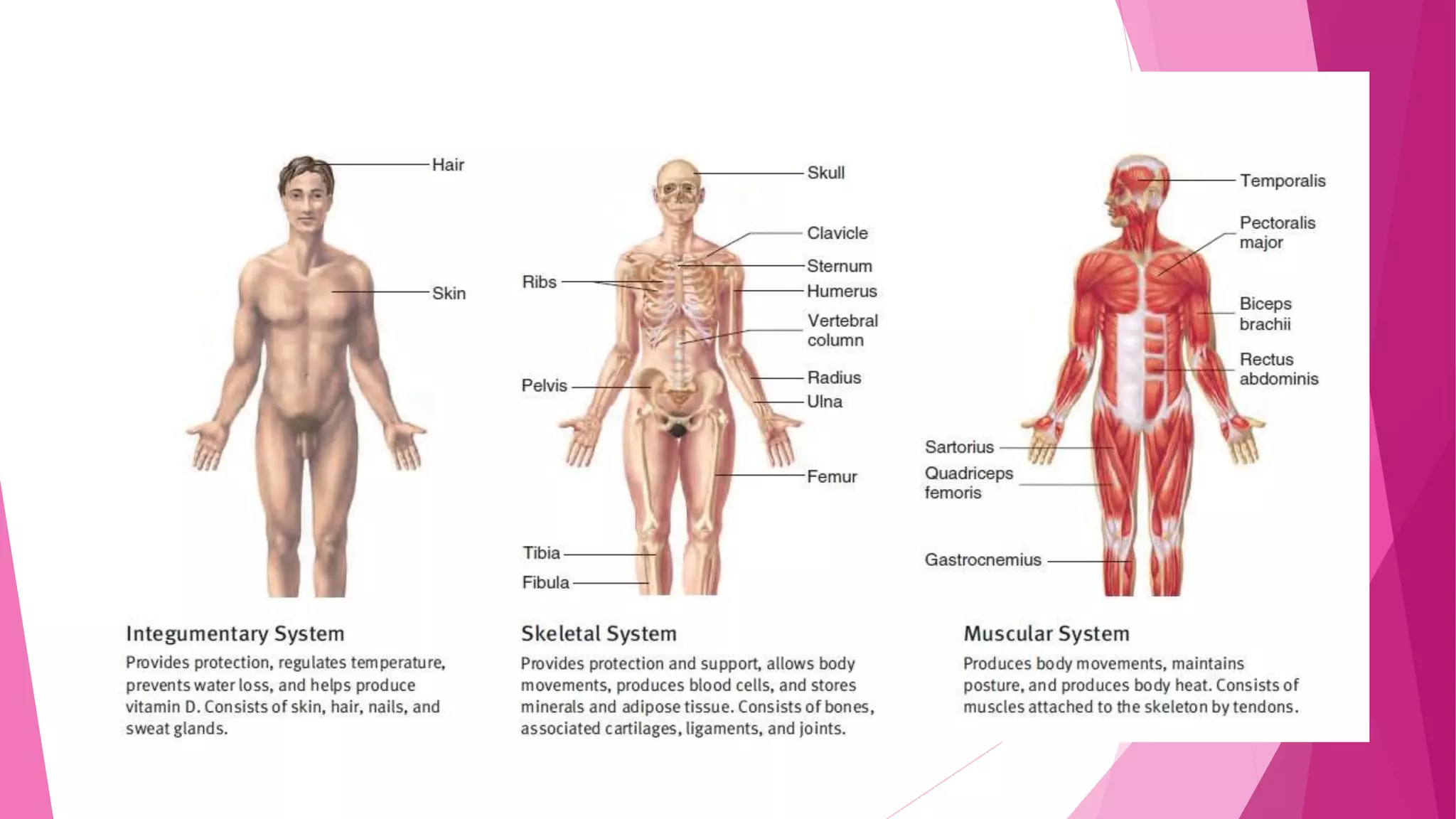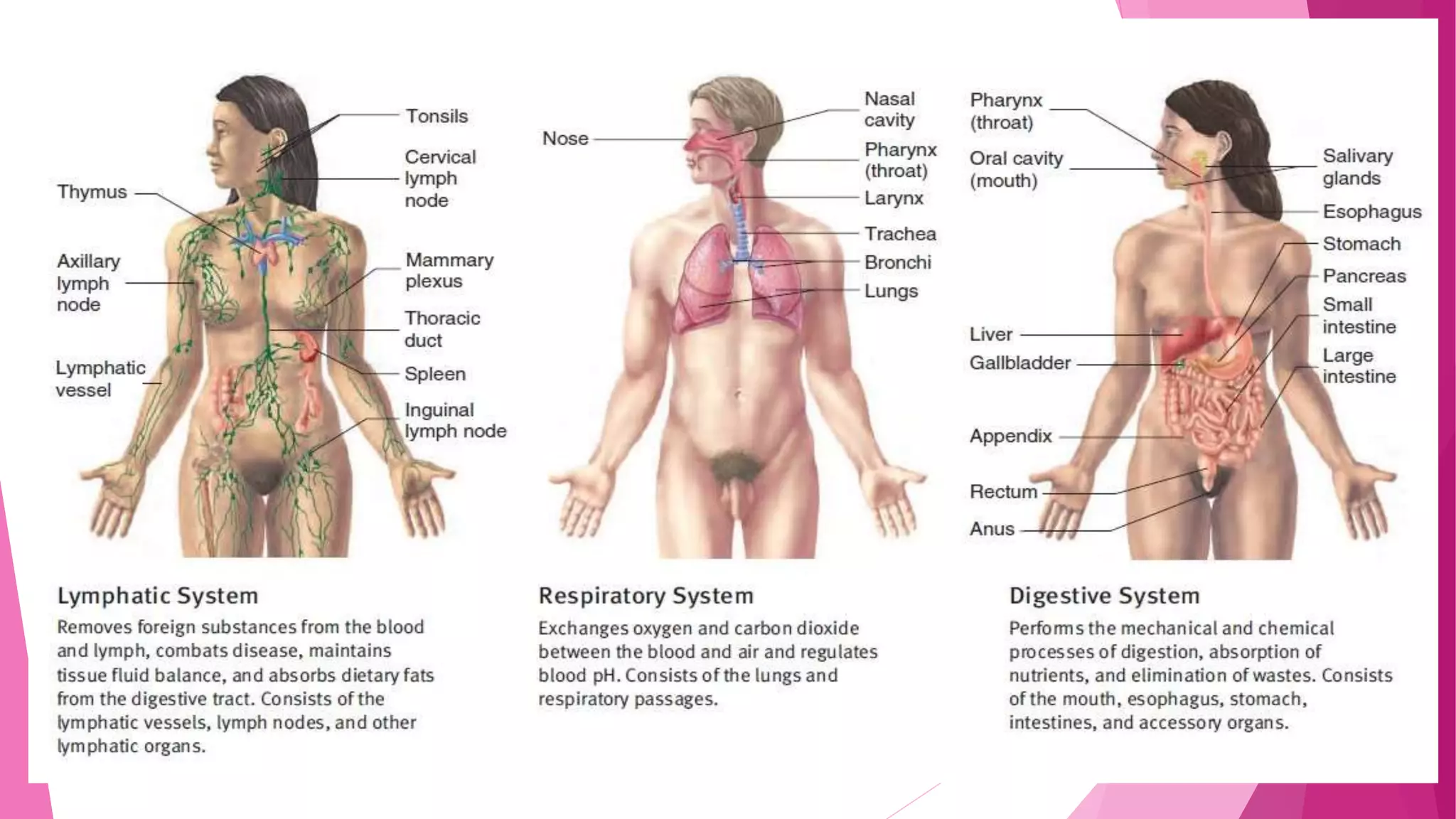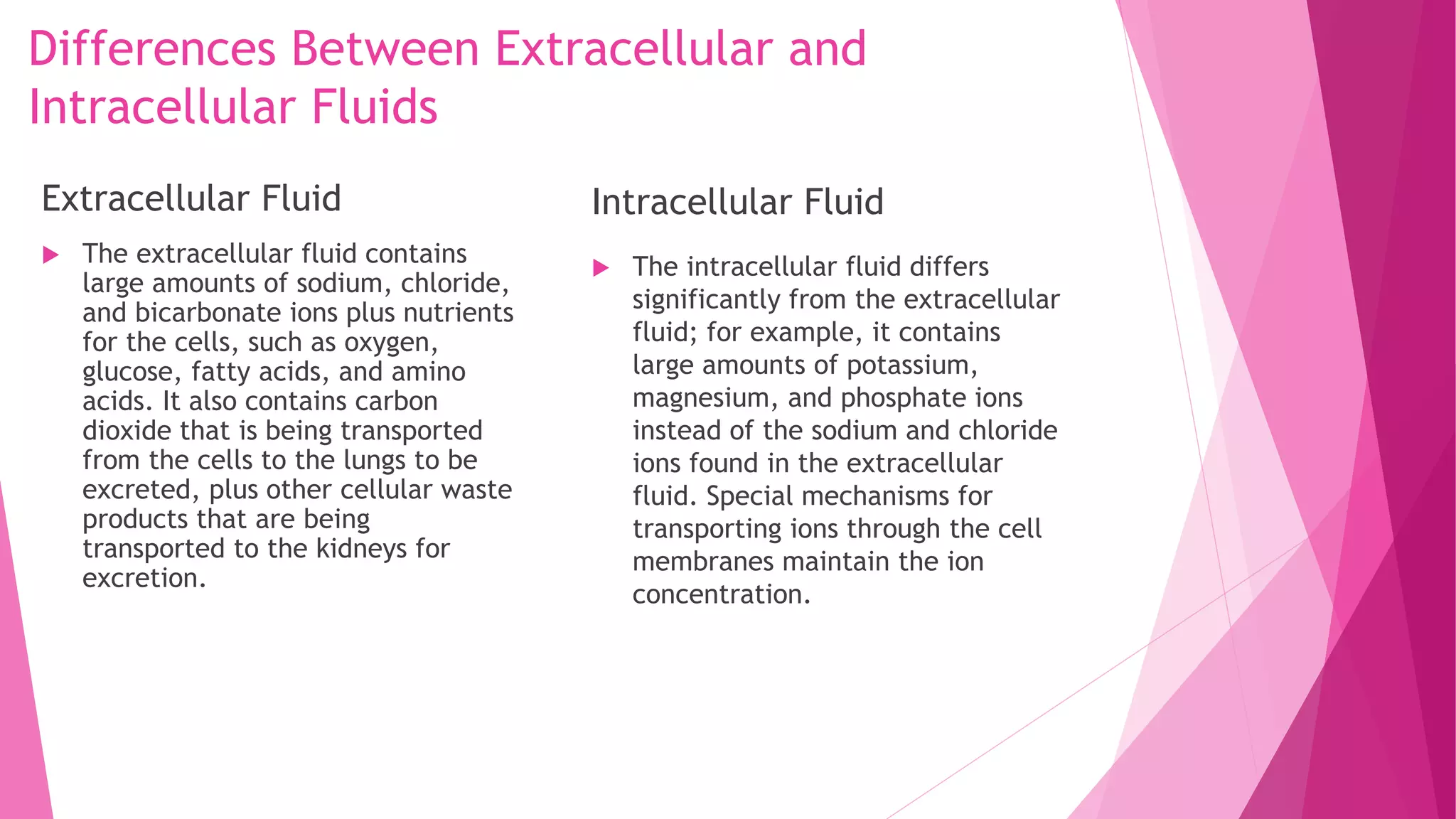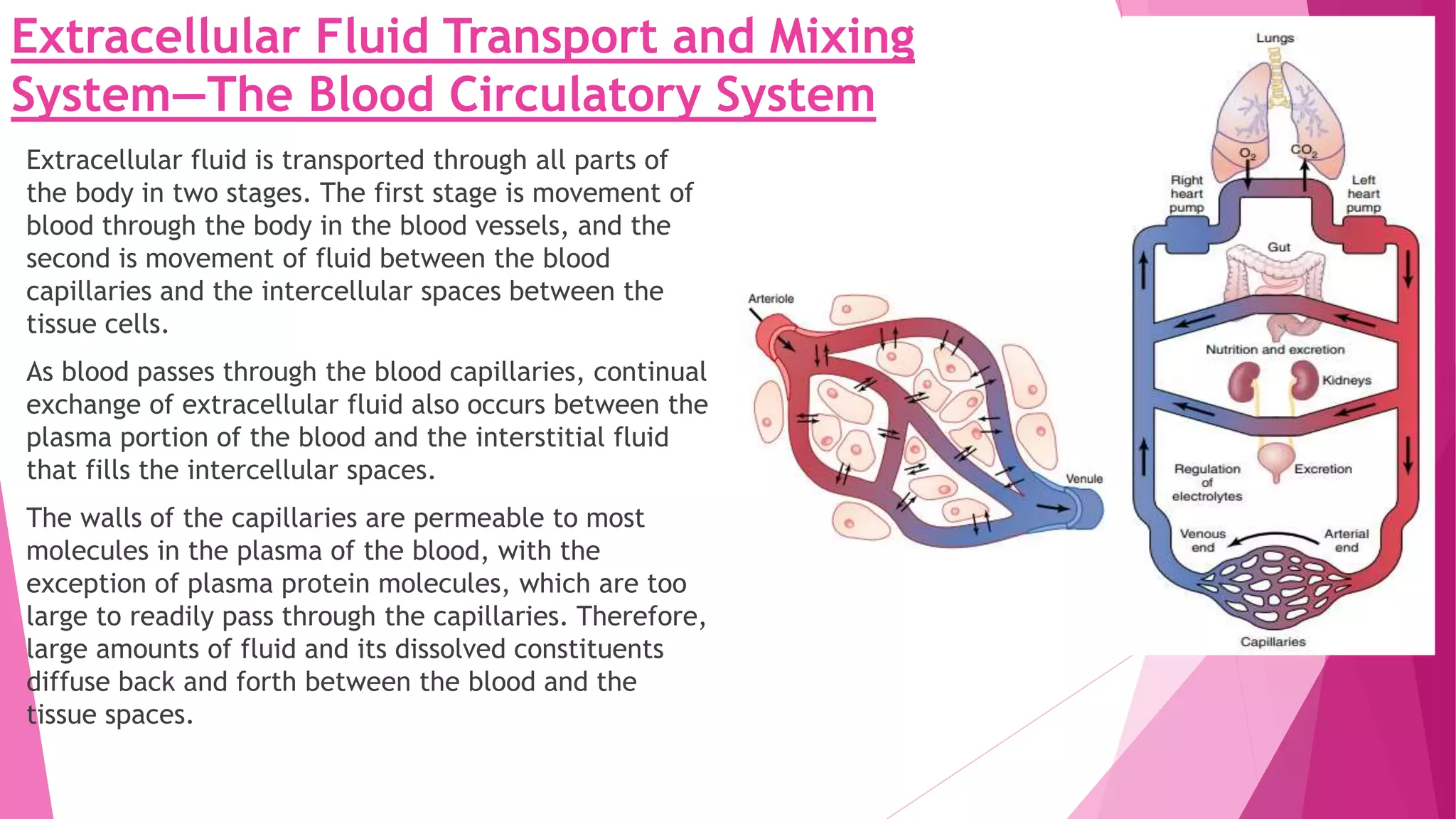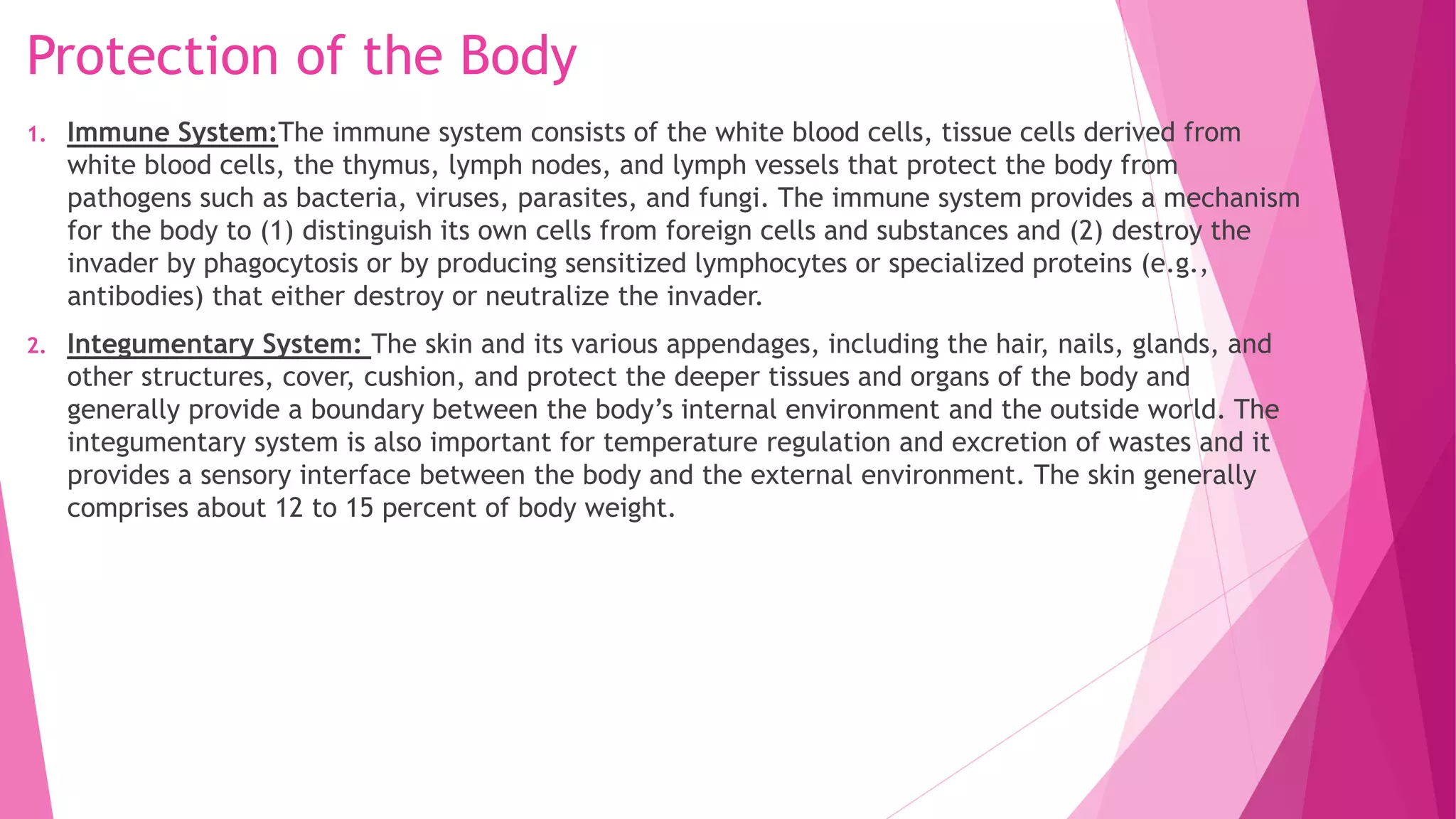The document discusses the basic concepts of physiology and cell biology. It begins by defining physiology and describing the functional organization of the human body across six levels - chemical, cellular, tissue, organ, organ system, and organism. It then explains the concepts of homeostasis, extracellular and intracellular fluids, and how nutrients are obtained and waste removed to maintain homeostasis. Key control systems that regulate homeostasis through negative and positive feedback loops are the nervous, endocrine, immune, and integumentary systems.




